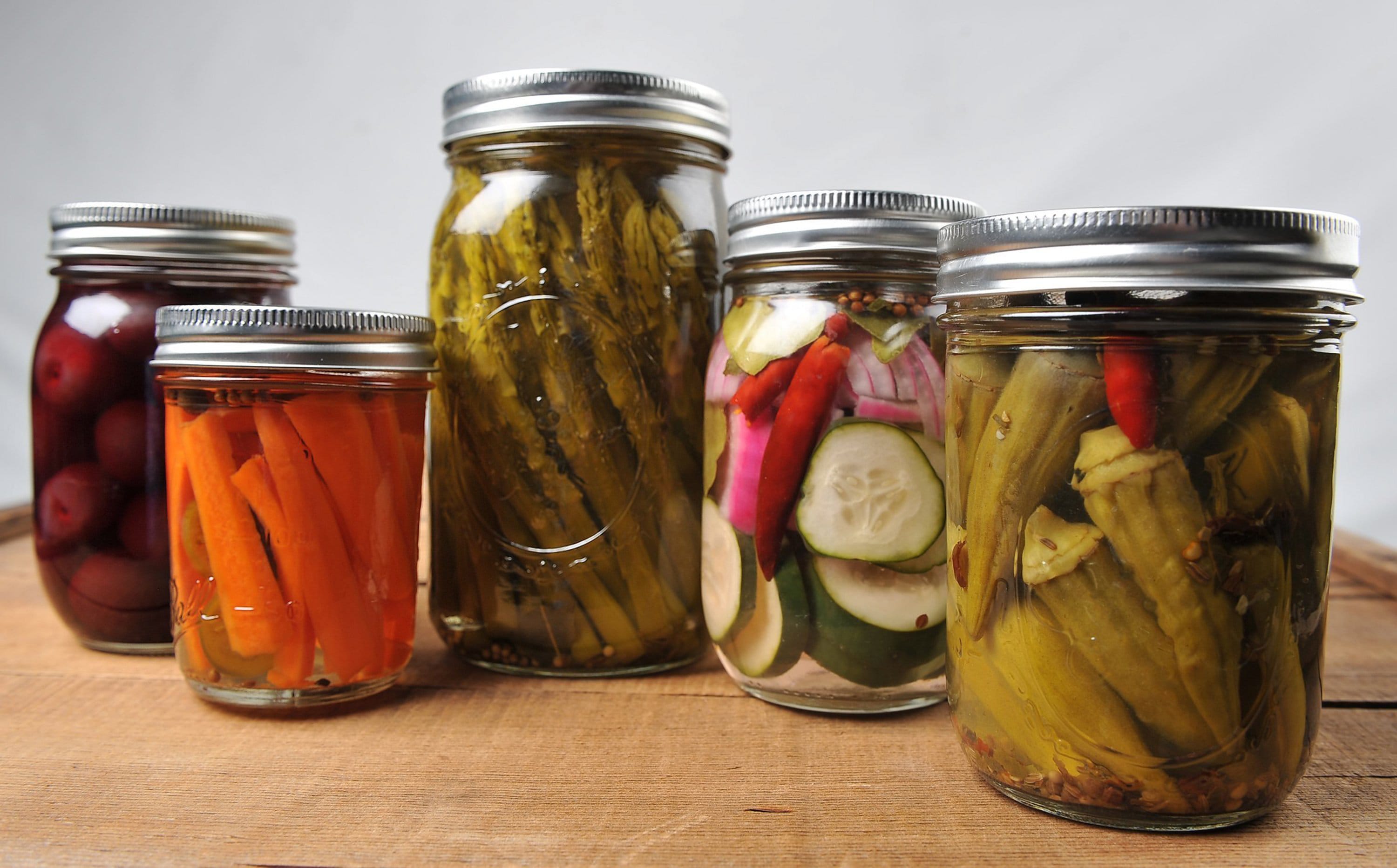Pickled Sweet Cherries
Adapted from a Whole Foods recipe by Kristy Page
1/3 cup sugar plus 1 tablespoon
1 1/4 teaspoon coarse sea salt
1 star anise (optional)
1 cinnamon stick, broken in half
6 whole cloves
1/2 cup white vinegar
1 3/4 cup water
1 pound fresh cherries, pitted
In a small saucepan, combine 1 3/4 cups water with the sugar, salt, star anise, cinnamon stick and cloves. Bring to a boil, lower heat and simmer, stirring occasionally, 3 minutes. Remove from the heat and let steep 5 minutes. Stir in vinegar. Place cherries in a 1-quart (4-cup) glass jar. Pour in enough vinegar mixture to cover cherries and almost completely fill the jar; you can either strain out the whole spices or place them in the jar. Place the jar on a wire rack and cool to room temperature. Cover and refrigerate for at least 2 hours and no more than 2 weeks.
Jalapeno Carrots
From Kristy Page
Brine:
2 cups white vinegar
1/3 cup sugar
Pinch of salt
1 tablespoon pickling spice mix. (Or, 20 peppercorns and four bay leaves)
Several carrots (enough to fill small jar) and three jalapeno slices.
In a pot, combine white vinegar, sugar, salt and spices. Bring mixture to a boil. Lower heat and simmer for 30 seconds. Turn heat off, set aside.
Slice carrots into sticks, place into jar. Pour the brine into the jars and add three jalapeno slices. Let cool before putting the lids back on. Refrigerate for three hours before tasting. Store in refrigerator.
Toorshi
From Lillian Nishkian
1 bunch of celery, cut into strips, 2-4 inches in length
1 bunch of baby carrots
1 head of cabbage, broken into pieces
1 head of cauliflower
Brine:
4 cups of white vinegar
3 cups of water
1/2 cup of salt
1 teaspoon sugar
Cut vegetables and place in a gallon jar. Bring brine to a boil and then pour over vegetables. Put lid on container.
Vegetables should be ready to eat in three days.



